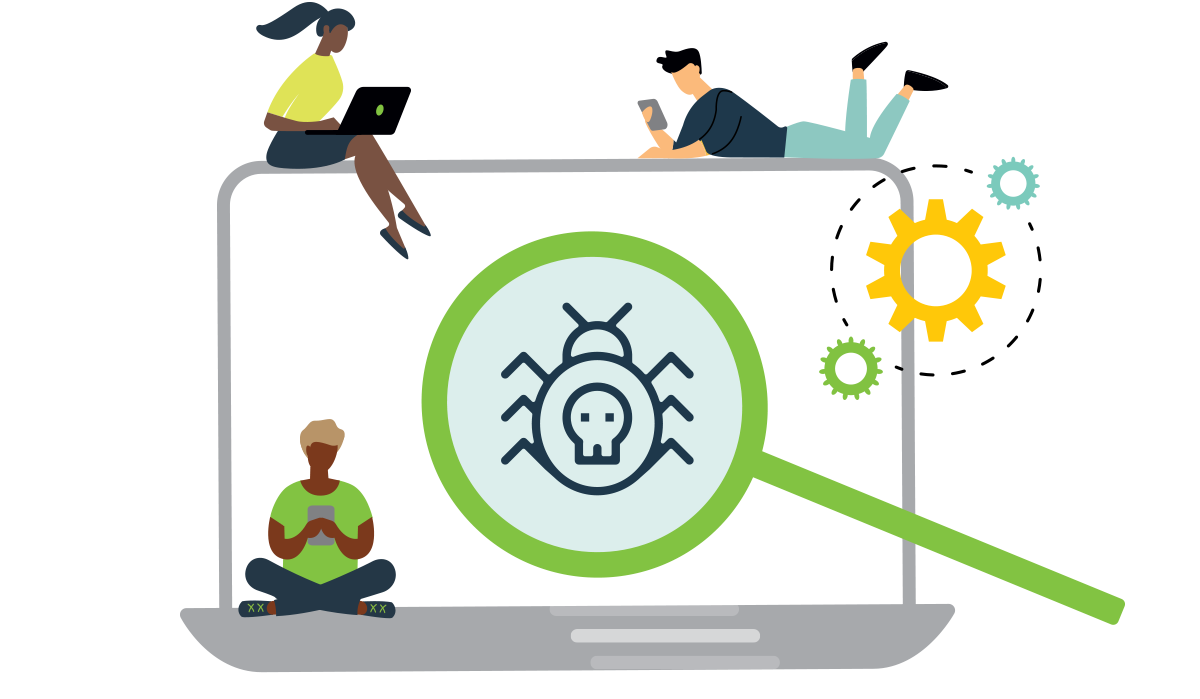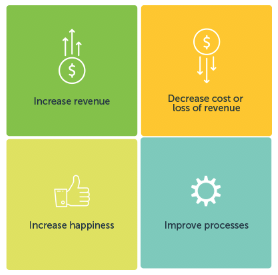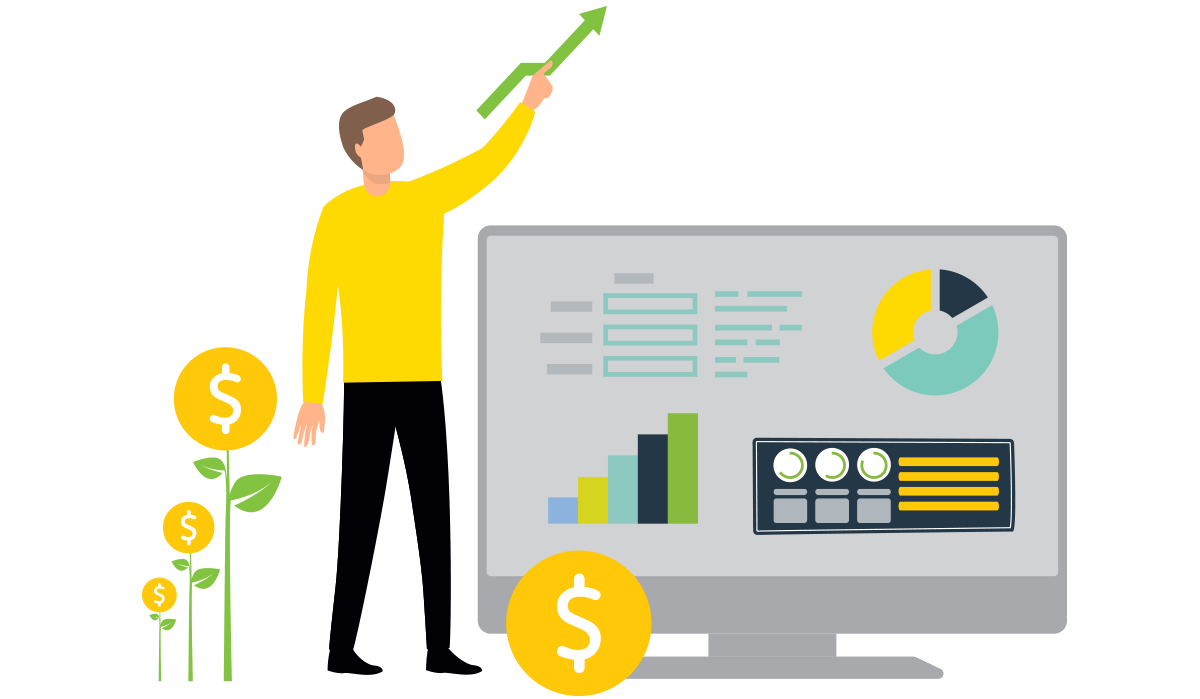How do you price and package predictive analytics with your application to maximize the benefits for your end users and your business?
In this chapter, you’ll learn how go-to-market strategies differ depending on whether you’re enhancing an existing application with predictive features versus launching a new predictive analytics product. We’ll explain how to identify the right alpha/beta customers and why it’s important to understand the value of predictive analytics to different end-user groups as you make pricing and packaging decisions. We’ll wrap up with some considerations for scoping out the minimum viable product (MVP) you’ll initially bring to market.
Let’s start with how to identify your initial customers and end users.
Closing the Insight-to-Action Gap
The predictive analytics capabilities you’re bringing to market will enable your customers to understand not only what’s happened in the past, but what’s likely to happen for your business in the future. The more deeply you embed predictive capabilities into your application, the easier it will be for users to act based on the insights.
In fact, this is an opportunity to be a change leader in your market. Until now, the insight-to-action gap has limited the business benefits of predictive analytics. Even when users had access to predictive data, few applications gave them the ability to act on the insights within the context of the application.
By embedding predictive analytics in your application, you can close this gap. You’ll create simpler ways for users to make forward-looking, data-driven decisions an integral part of their everyday work.
Think Data at Alpha/Beta

Alpha and beta engagements are opportunities not only to test and refine your products, but to understand the value of predictive analytics in different use cases.
Before you start an alpha or beta project, make sure the data you’re using for predictions is representative of the data your target markets will be using. Avoid getting pulled into one-off engagements, as they won’t help you make predictive analytics a large-scale success.
Why is this so important? Because as you develop and refine your predictive analytics capabilities, machine learning (ML) algorithms are generating models. These models are based on patterns the ML technology has discovered (across variable values and relationships), which are predictive of certain outcomes. For your predictive models to work as expected post-launch—predicting similar outcomes for lots of other customers—they’ll need to work with the same types of data variables across the alpha/beta customers and your larger user groups.
With that in mind, let’s look at the all-important question of pricing.
The Wrong Way to Price Predictive Analytics: Based on Current Offerings

Let’s say you have a cloud-based application that reports customer churn. Your customers pay $500 per month to use it. If you add predictive analytics capabilities as a new module to your product, how will you price that module?
A common predictive analytics pricing strategy is to choose a price point—such as 30 to 50 percent—and add that on top of the current monthly license. If we pick 50 percent, then the new module will be priced at $250 per month.
This strategy may seem to make sense. But if you’re randomly picking a percentage of your core product price as your upsell price point, you risk either undervaluing your product, overvaluing it, or doing both at the same time.
Predictive analytics provides unique insights into the future that can enhance your customers’ businesses. And if you’re able to roll out predictive before your competitors, you’ll have a head start in capturing your market. So even though a 50 percent markup may seem reasonable, it doesn’t get to the heart of the value of predictive analytics.
A Better Way to Price Predictive Analytics: Based on Business Value & ROI

Instead of basing the price of a newest premium feature (predictive analytics) off your initial application, consider the impact your embedded predictive analytics features could have on your customers’ businesses.
Let’s continue with the example of a customer churn product. Say you have a customer that is losing a million dollars annually to churn. If the predictive module can help your customer understand why churn is so high and take proactive action to reduce it by 20 percent a year, the value is a potential revenue increase of $200,000 a year (plus the marketing and onboarding cost savings from not having to replace those customers).
So, how much can you charge a customer for that magnitude of value? Even 15 or 30 percent of the annual revenue gain may be reasonable, but let’s be conservative and say you charge 10 percent of the potential ROI. That’s a price of $20,000 per year ($1,667 per month) for the predictive module.
This price—three times that of your current churn dashboard—may be a bargain for some end users. For others, it may be overpriced. The next step in designing your go-to-market strategy is to package your predictive features and refine your pricing based on how different end users will work with (and perceive the value of) the analytics.
ROI Can Take Many Forms
A strong value proposition for embedded predictive analytics will deliver benefits in at least two quadrants of the framework shown below:

- Increase revenue such as by predicting who will respond positively to an offer or who will purchase the product
- Prevent loss such as by preventing customer churn, machine failures, or appointment no-shows
- Increase happiness such as by boosting customer satisfaction through tailored offers or employee satisfaction through providing better tools to do their jobs
- Improve processes such as staffing up for higher call volumes or more efficiently allocating staff resources
For example, consider a predictive analytics feature that helps a sales team send targeted, personalized offers to prospects. It covers three ROI boxes by:
- Increasing revenue by focusing marketing on targeted offers
- Decreasing costs by preventing resources from being wasted on generalized offers
- Making customers happy by bringing them relevant offers
Design Packages and Refine Pricing Based on User Value

For some of your customers, predictive analytics will enable them to perform their jobs at a whole new level. For others, predictive analytics will be a nice-to-have feature, but not central to what they’re trying to accomplish.
Take our customer churn product example:
Anyone using your analytics dashboard showing current churn rates and historical trends will appreciate the addition of a new panel showing predicted churn rates for the coming month or quarter. But would that be worth paying more money? For many users, probably not.
A subset of users will want to see a ranked list of customers with high churn risk. They may be responsible for reaching out to these customers with retention offers and communications. Providing them with an easy way to identify these targets—and take immediate action—could improve their work enough to justify an increase in price.
An even smaller subset of users will also want to know the characteristics of customers likely to churn. They might be responsible for allocating customer management resources to nurture lasting high-value relationships. Or they may be guiding marketing strategies to target new customers with long-term relationship potential.
These differences don’t mean you have to create a unique offering for each type of user. Look for an analytics development platform that lets you build predictive analytics features once and use them in multiple ways. Simply turn features off and on through visibility controls, conditional logic, and your application’s security model. This allows you to offer some features to everyone and limit access to others.

Define Your MVP

For new products or add-on modules, you’ll need to deliver enough predictive features at initial launch so your customers will feel justified paying an additional price.
This is essentially the Minimum Viable Product (MVP), a concept every software company knows well. What’s the smallest set of predictive features you need in order to make your offering appealing and functional to a critical mass of early customers—enough to validate your value proposition and provide feedback for future development?
When defining your MVP, consider:
- Is the pain associated with the problem you’ve decided to solve big enough that there will be a sufficient number of customers willing to invest? That is, will even a minimum set of features provide welcome, urgently needed relief?
- Within these customer organizations, which end users would not only benefit from the predictive insights you’ll be delivering, but also have a high frequency of use? You’ll get better engagement and more substantive feedback if your predictive features play a role in day-to-day workflows. Make sure your MVP provides a critical mass of value to these frequent flyers.
Once you’ve scoped out the embedded predictive analytics features you need for your initial go-to-market strategy, you can deploy your application and iterate over time.
